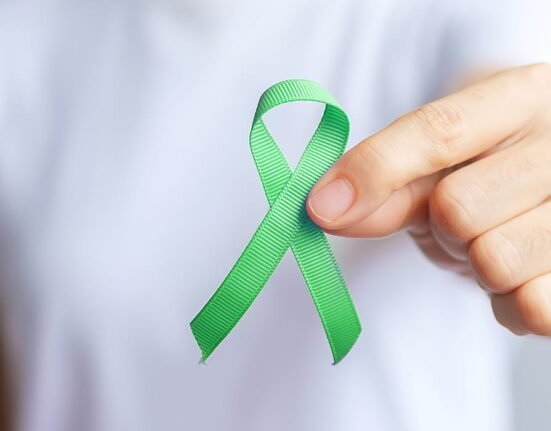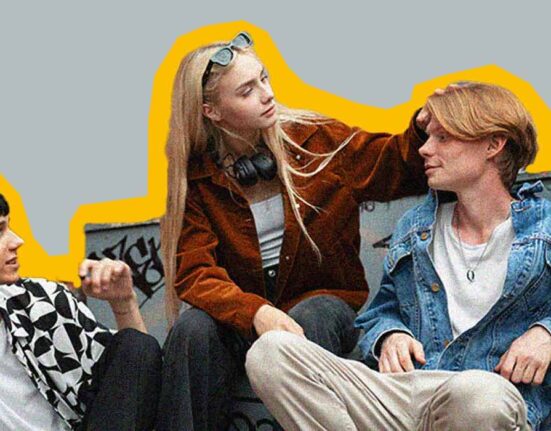The evolution of women archetypes in meme culture has been shaped by the “girlboss” culture, which encouraged ambitious women. Emerging at the beginning of the 2010s, the girlboss embodied empowerment through personal achievement. Combining ambition with stereotypically feminine traits like caregiving (Byrne & Giuliani, 2025). But the critique identified the fact that this empowerment tended to perpetuate neoliberal success ideologies, succeeding the collective feminist battles (Berman, 2021).
Read More: How Media Influences Women’s Empowerment
The Rise of the Girlboss Icon
The “girlboss” icon then became ubiquitously visible via the likes of Sophia Amoruso, whose brand and memoir #GIRLBOSS encapsulated the ideal of women carving out space in business and corporate spaces. On social media, the archetype propagated via memes reveals in the juxtaposition of power suits and makeup palettes, or phrases such as “rise and grind but make it cute,” combining ambition with hyper-feminine sensibilities. But these representations also invited scrutiny for reducing feminism into a lifestyle brand—where power was conflated with buying power, hustle culture, and self-marketing over challenging structural inequalities. Take the memes that ironically caption corporate lingo with “girlboss energy,” for example, expressing admiration as much as derision, indicating how this stereotype is framed, yet also constrained, the cultural imaginary of women’s empowerment.
At the same time, the “divine feminine” concept gained popularity as a spiritualized expression of femininity but resulted in a one-sided understanding of female power (Froio, 2022). The “alpha female” character also emerged, presented as confidence and assertiveness, but ridiculed for the utopian ideals she represented and because she dismissed structural barriers within women’s lives. While some memes amplified this portrait, they revealed the limits of such narratives (Minor, 2023).
These depictions in culture influenced the perception of women’s empowerment by the public, with concerns of building competition instead of solidarity among women. Memes transform with these issues, demonstrating the difficulty of depicting empowered women in modern culture.
The Illusion of Female Empowerment through Humour and Irony in Memes
Humour dominates the construction of attitudes toward feminine empowerment in meme culture, usually concealing system issues. Humorous memes both reinforce and challenge social norms, with entertainment and social commentary tugging in opposite directions. Anti-girlboss meme type exemplifies this because it satirises femmiquette and idealises powerful women, showing contradictions regarding neoliberal feminism. Such memes, as per Froio (2022), show ambivalence towards ‘choice feminism,’ and the use of humour as criticism and dissent is evident.
Irony is utilised here, allowing creators to alternate between praising and satirising characters like the ‘hun.’ Minor (2023) contends that, although these memes seem empowering, they actually sustain working-class femininity stereotypes. Having positive representations with ironic undertones promotes questioning of who is going to benefit from this kind of humour.
While women are portrayed as being powerful, such images also tend to trivialise challenges like economic inequality and misogyny. In the debate by Yakali (2023), humour can also ignore actual attempts at empowerment. Whereas it notes the balance between the celebration of femininity and the recognition of systemic issues.
Inequalities Dating Back to Politics, Economics, and Safety
The long-standing political, economic, and safety inequalities highlight the ongoing difficulties that women are still facing across various areas. Political representation remains disproportionately uneven, with women holding barely over 26% of parliamentary seats globally as of 2021, according to a series of studies (Froio, 2022). In leadership roles, women’s representation is extremely poor; for instance, only 8% of Fortune 500 companies are led by women. This imbalance often arises as a result of systematic barriers that hinder women and perpetuate cycles of imbalance.
Economic imbalances also exacerbate these challenges. The global pay gap persists, with women earning about 77 cents for every dollar earned by men. Financial autonomy is paramount; studies have illustrated that increased economic stability is linked with reduced rates of domestic violence against women (Froio, 2022). However, most women are economically dependent on their spouses due to ingrained differences in wages and opportunities.
Safety is a matter of concern as well. Globally, statistics show that one in three women has experienced physical or sexual violence at some point in their lives. Social norms usually make light of such issues, so women’s safety is ignored or minimised. Therefore, even though meme culture gives the impression of empowering women. It does not tackle the deeply ingrained systemic issues that continue to perpetuate inequalities.
Read More: Mind Over Money: 10 Psychological Keys for Financial Success
Digital Spaces: Unshackling vs Pacifying Women’s Agency
For women in the virtual realm, their agency is between actual empowerment and complicit acquiescence. Women’s activism has been an effective tool, with women being able to speak out against their plights and mobilise around gender-based violence causes and reproductive rights, hence becoming more visible on social media platforms (Greig, 2021). Employing hashtags like #MeToo and #TimesUp has ignited global movements that called attention to systematised injustices and pooled collective pressure for change (Greig, 2021).
But this online activity tends to reveal significant flaws. Although empowerment happens in certain contexts, others only work toward reinforcing traditional gender roles or falling into echo chambers. For instance, the ‘girlboss’ phenomenon reveals that the encouragement of women entrepreneurship has the potential to cover up the deeper structural disadvantage faced by women of colour and lower socio-economic status (Byrne & Giuliani, 2025). This limited response to empowerment will create a cosmetic appearance of improvement without confronting institutional barriers.
Digital activism can boomerang when it provokes a reaction or patriarchal narratives hijack it. Memes that initially champion feminist ideals could ultimately perpetuate stereotypes or downplay significant issues (Minor, 2023). Hence, while the internet can allow women’s voices to become heard louder, it can also potentially dilute real cries for change by prioritising humour over real conversation.
Feminist Critiques of Post-feminism in the Context of Meme Culture
Feminist critiques of post-feminism reveal an intricate intermingling between meme culture and the foregrounding of feminist ideologies. Post-feminism is a system that seeks to adopt the gains of feminism while also upholding neoliberal values, which commonly result in a shallow interpretation of empowerment. It is particularly clear within meme culture, where irony and humour may cover up undercurrents of problems within society, creating a perception of female independence. As explained in Yakali (2023), though memes try to indicate common feminine archetypes that seem to represent empowerment, they reinforce traditional gender norms unintentionally by downplaying the real issues faced by women through satirical representations.
Additionally, memes often reflect the commodification of feminism, with the ‘girlboss’ narrative representing a superficial notion of empowerment. Byrne & Giuliani (2025) assert that the narrative will commonly leave out marginalised voices and ignore structural inequalities. Therefore, the large-scale sharing of memes will continue a pattern where women are presented as empowered yet remain trapped by society, upholding individual success above communal freedom.
Critics hold the view that instead of fostering genuine political engagement, meme culture might propel women’s activism into complacency by presenting self-empowerment as something personal rather than a collective responsibility. This is in agreement with the criticism that post-feminism tends to limit feminist debate to problems surrounding individual choice, thereby weakening broader social and political movements aimed at addressing structural inequalities.
Read More: Why Safety Feels Different for Individuals in Cities
Conclusion: Thoughts on Virtual Matriarchy vs Actual-World Patriarchy
The research of online matriarchy alongside real-world patriarchy illustrates a double motion of empowerment versus systematised oppression. In the world of memes, a vibrant online existence, powerful female archetypes keep appearing. Creating a veneer of feminine empowerment that can mask the deeply ingrained inequality women face in policy, economy, and personal safety. This examination recognises the imperative for feminism to change in the world of the internet, knowing that while memes may serve as vehicles for sarcasm and humour, they do not automatically dismantle patriarchal systems.
In the future, the direction of feminism in these online forums should be toward creating genuine connections and solidarity among women, avoiding narratives based on individualism. Contemporary feminist discourses, like those outlined by Yaszek (2005), centre on the need to work toward a shared freedom through subversive artistic processes challenging accepted gender normativities. Also, Berman’s (2021) results impel us toward stepping away from girlboss and toward more dynamic presentations of women’s existence—facilitating collaboration rather than competition and valuing being over performance only. By acknowledging such complexities, feminism can proceed to meet both the threat of virtual matriarchy and the long-established realities of patriarchy.
1. Maternal Imagery and Symbolic Authority
People are more likely to view authority as relational, emotionally responsive, and morally directing rather than necessarily hierarchical and coercive. Maternal imagery and influence shape identity, especially early in life, as the maternal figure becomes the dominant prism through which the world is seen. Consequently, people are likely to internalise models of care, regulation, and guidance as feminine-coded, constructing their sense of morality, relationships, and responsibility in ways that prioritise emotional depth and nurturing authority.
Concurrently, the visibility of this symbolic maternal order influences how people understand power and social roles in the broader world. Through exposure to stories where maternal authority organises meaning—either via media, home life, or cultural myths—people come to view femininity as the site of cultural and moral control, whereas masculinity is felt to be absent, on the margins, or fractured. This ambivalence fosters a worldview where patriarchal power is intellectually recognised but feels less immediate than feminine or maternal power. Creating tension between symbolic matriarchy and structural patriarchy in shaping one’s sense of authority, identity, and social order.
References +
Nicole Froio. (2022). All Girlbosses Are Bastards. https://blindfieldjournal.com/2022/08/12/all-girlbosses-are-bastards/
Laura Minor. (2023). ‘U OK hun’? Classed femininities, meme culture and locating humour in the celebrity ‘hun’ – Laura Minor, 2023. https://journals.sagepub.com/doi/10.1177/13675494221134344?icid=int.sj-full-text.similar-articles.6
Janice Byrne, Antonio Paco Giuliani. (2025). The rise and fall of the girlboss: Gender, social expectations and entrepreneurial hype. https://www.sciencedirect.com/science/article/pii/S088390262500014X
Dikmen Yakali. (2023). Is She a Feminist Icon Now? Barbie 2023 Movie and a Critique of Post-feminism. https://redfame.com/journal/index.php/smc/article/view/6478
James Greig. (2021). Unpacking what it means to ‘gaslight, gatekeep, girlboss’. https://i-d.co/article/gaslight-gatekeep-girlboss/
Emma Beddington. (2024). Smashing the girlboss myths: how women are doing ambition on their own terms. https://www.theguardian.com/society/article/2024/aug/04/smashing-the-girlboss-myths-how-women-are-doing-ambition-on-their-own-terms
Judy Berman. (2021). Pop Culture Is Finally Getting Over the Girlboss Heroine. What Comes Next?. https://time.com/6073788/physical-review-girlboss/
Lisa Yaszek. (2005). I’ll be a postfeminist in a postpatriarchy, or, Can We Really Imagine Life after Feminism?. https://electronicbookreview.com/essay/ill-be-a-postfeminist-in-a-postpatriarchy-or-can-we-really-imagine-life-after-feminism/













Leave feedback about this